Hue Imperial City, a vital part of the Complex of Hue Monuments, gained UNESCO recognition as a World Cultural Heritage site in 1993. This historic city draws numerous Indian tourists each year.
As a significant feudal capital in Vietnamese history, it witnessed the rule of 13 Nguyen Emperors. This article provides insights into Hue Imperial City, covering its history, architecture, best visiting times, key attractions, and practical tips for exploring this ancient marvel.
Brief Information
- Location: 23/8 Street, Thuan Hoa Ward, Hue City, Thua Thien Hue Province
- Opening hours: 7:30 am to 5 pm (daily)
- Entrance fee: 150.000 VND/pax (around $6)
Historical Background Of Hue Imperial City
In Vietnamese early modern history, Hue Imperial City stood as the largest structure, requiring thousands of workers and immense quantities of materials for construction tasks like moat digging and river filling. The construction process lasted from 1803 (under Emperor Gia Long’s reign) to 1832 (under Emperor Minh Mang’s reign).
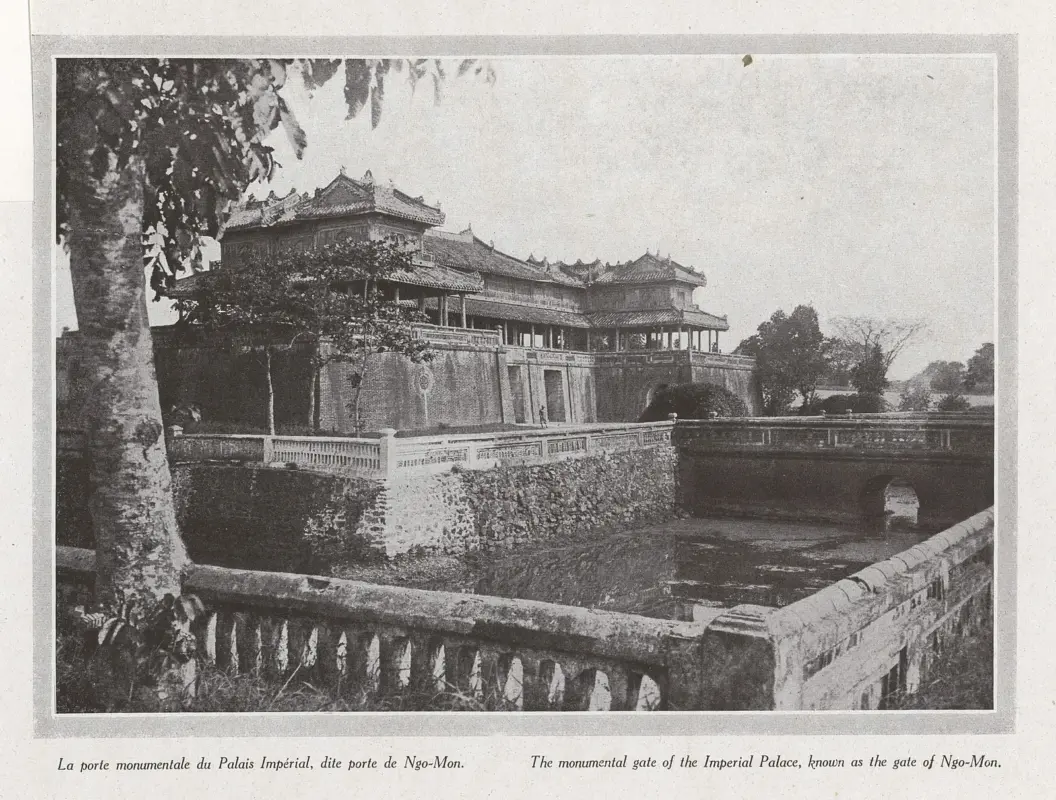
Beyond its military significance, Hue Imperial Citadel held great cultural and political importance. It was Vietnam’s capital in feudalism until the country’s division in 1945. Recognized as part of the UNESCO-listed Complex of Hue Monuments in 1993, today, Hue Imperial City is a renowned destination, drawing countless domestic and international tourists annually.
Unique Architecture In Hue Imperial City
Hue Imperial City represents a unique fusion of Vietnamese architectural rules, Oriental philosophies, and the five elements theory of Chinese I Ching. Also, the structure was influenced by Western military architecture in the late 17th century.
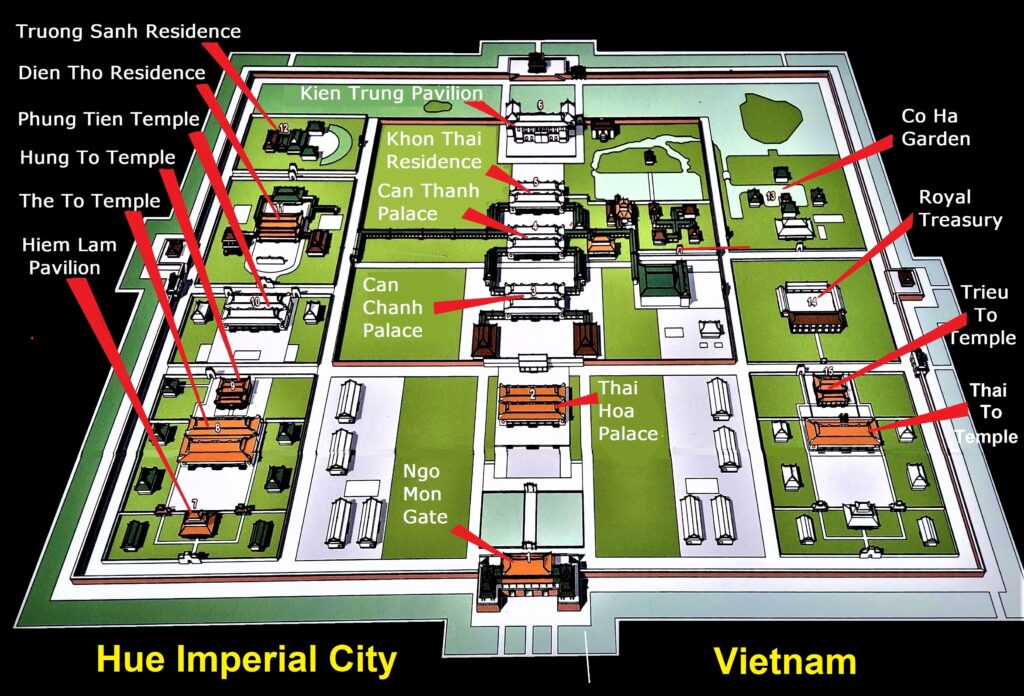
With an area of 520 hectares, Hue Imperial City comprises an architectural system including three important structures perfectly aligned along a north-south axis:
- The Citadel (Kinh Thành): This outermost structure consists of defensive ramparts encircled by a protective moat, serving as the primary line of defense.
- The Imperial City (Hoàng Thành): The inside rampart is enclosed by four walls with about 600m long each and four gates. Among these gates, the south entrance (Ngo Mon gate) holds particular significance.
- The Purple Forbidden City (Tử Cấm Thành): This architecture is the internal part of the Imperial City and the residence of the Emperor and the royal. The Purple Forbidden City is the most strictly protected area.
How To Get There
To reach Hue Imperial City, Indian tourists first need to travel to Hue City. Because there are no direct flights from India to Hue, you must fly to either Ho Chi Minh or Hanoi and then continue your journey to Hue. For detailed guidance on traveling from Ho Chi Minh to Hue or Hanoi to Hue, Indian visitors can refer to our articles in Vietnamtour.in.
Once in Hue City, you have various transportation options to reach Hue Imperial City, including buses, taxis, cars, or motorbikes.
Best Time To Visit
The best time to visit Hue Imperial City is from January to August, with its pleasant climate and many exciting activities. It’s advisable to check the weather forecast before embarking on outdoor trips because the weather in Hue can vary annually.
What To Expect When Visiting Hue Imperial City
Flag Pole
Behind the first citadel is the ‘Kỳ Đài,’ a 37-meter-high flag pole erected in 1807. Originally made of wood, it was reconstructed with reinforced concrete during the restoration in 1948. The pole features multiple levels with Bat Trang tiles.
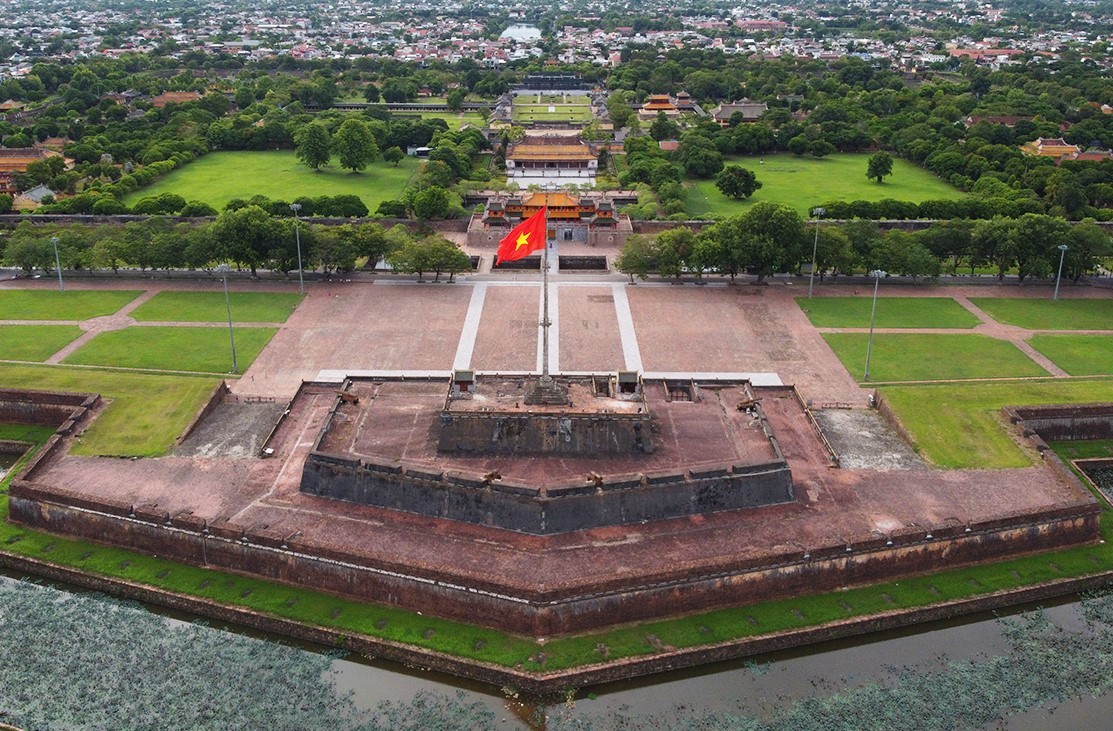
Imperial City Gates
The Hue Imperial City is encircled by a moat designed for both protection and maritime transport. Behind the moat is the first citadel spanning 520 hectares, boasting 11 gates by road and 2 gates for access through waterways. The Imperial City’s inner rampart features four gates facing the four directions: east, west, south, and north. Among them, the southern gate, known as ‘Ngo Mon,’ serves as the primary entrance to the Imperial City.
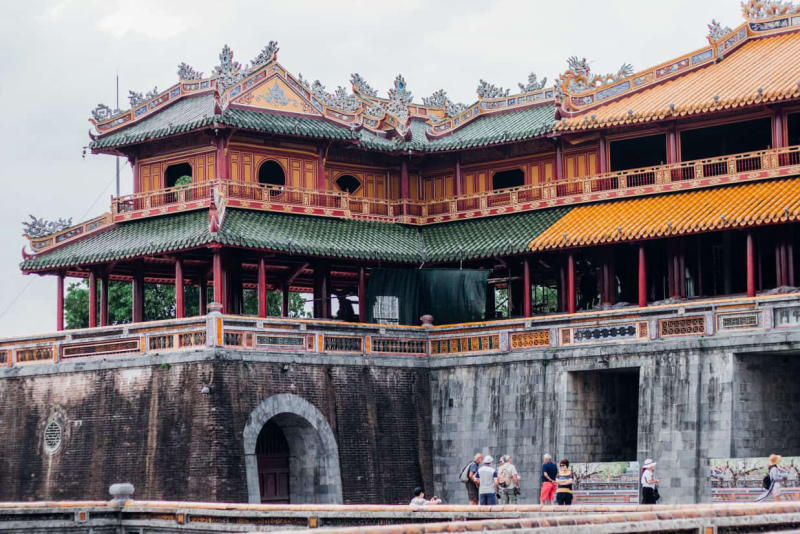
Ngo Mon is intricately designed with five pathways: the central path exclusively reserved for the Emperor, flanked by paths designated for civil and military mandarins, while the outermost paths accommodate soldiers, servants, horses, and elephants. Atop the Ngo Mon gate lies the Ngu Phung pavilion, offering the Emperor a commanding view of the expansive square ahead.
Outer Court – Court in the Imperial City
The Outer Court, located within the Imperial City, includes numerous palaces serving diverse functions, such as political affairs and royal ceremonies. Among these, the Thai Hoa Palace stands out as the largest. Erected in 1805, it served as the venue for discussions on national matters between mandarins and the Emperor, as well as for significant court rituals, receptions for foreign ambassadors, and diplomatic events.
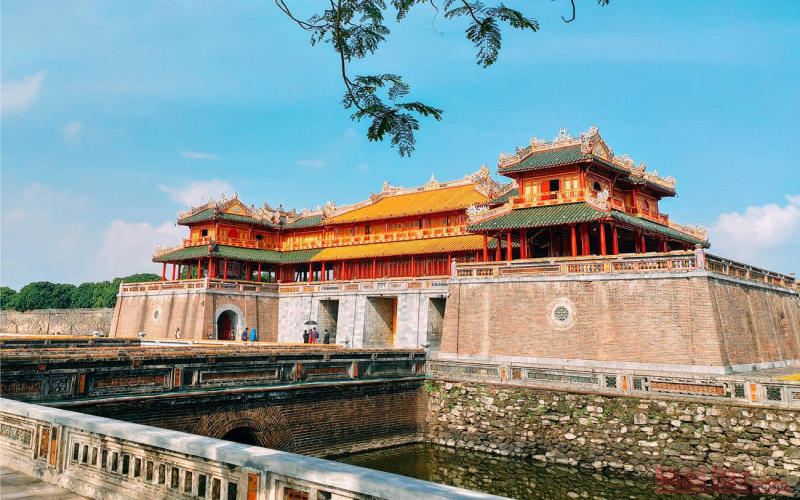
In this area, Indian tourists can also explore the residence of the Emperor’s grandmother, known as Dien Tho Palace, as well as temples dedicated to honoring the past emperors of the Nguyen dynasty.
Purple Forbidden City
Purple Forbidden City is the internal part of the Imperial City and the residence of the Emperor and the royal family. Renowned for its stringent security measures, the Purple Forbidden City was the most heavily guarded area within the complex.
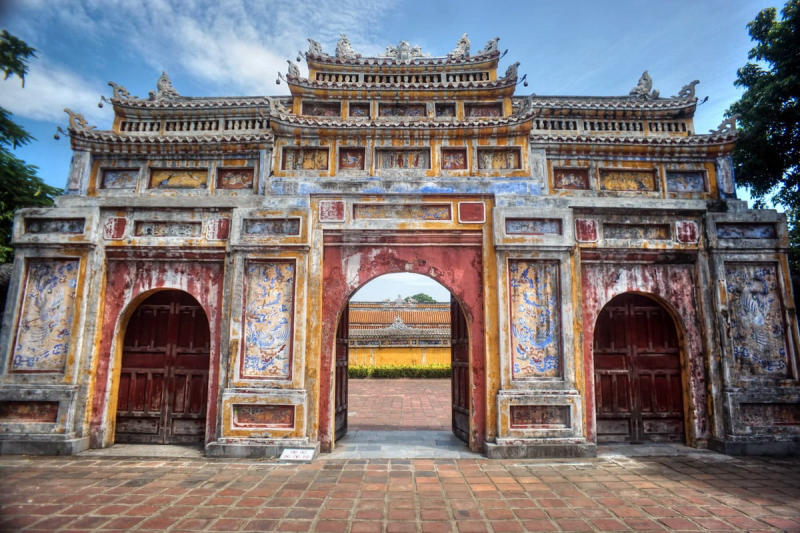
Inner Court – Court in Purple Forbidden City
The inner court within the Purple Forbidden City serves as the private living quarters for the Emperor, his wives, and children. It contains a range of facilities, including palaces, gardens, libraries, residences, and theaters, providing spaces for the royal family to work, study, and unwind.
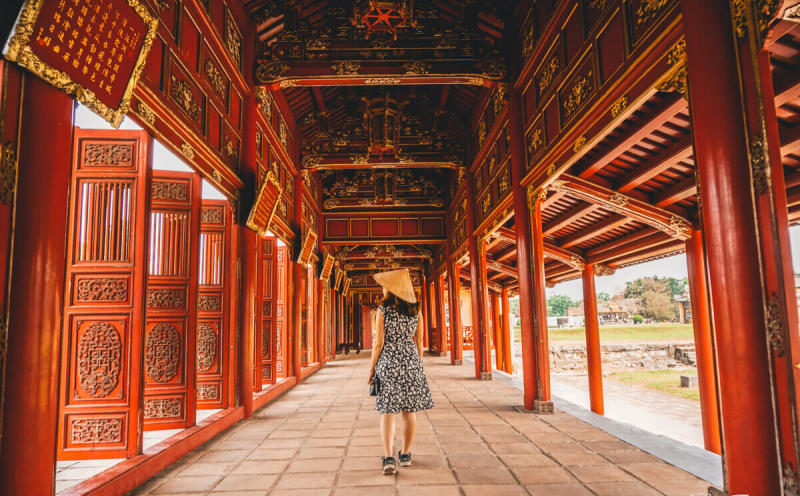
For instance, the Can Chanh Palace served as the Emperor’s workplace, while the Khon Thai Palace functioned as the residence of his wives. The royal gardens boast lush trees, ornamental plants, and expansive lotus ponds, offering serene settings for the Emperor and his family to stroll and connect with nature.
Things To Do In Hue Imperial City
Take Photos With Traditional Costumes
Within Hue Imperial City, Indian visitors have the opportunity to rent traditional costumes and capture memorable photos in the ancient and splendid setting. Ensure you capture unforgettable moments during your visit to this historic city.
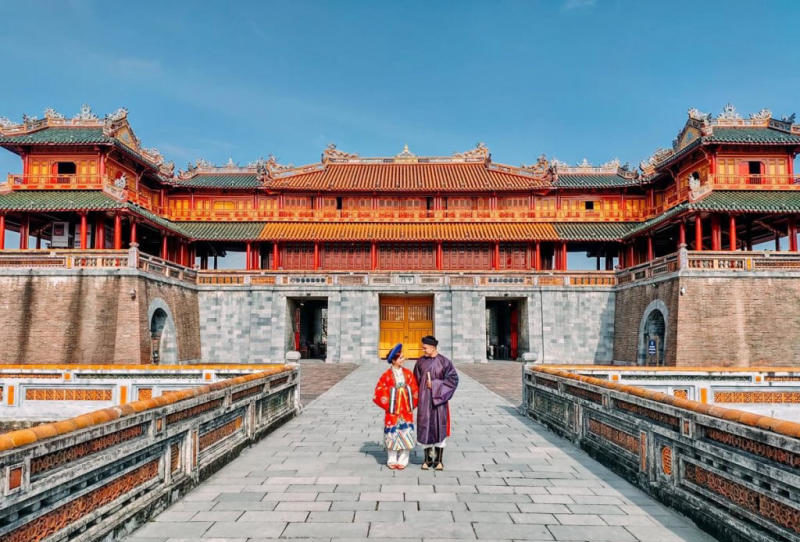
Visit Historical Exhibitions
Numerous exhibition spaces in Hue Imperial City display artifacts, paintings, photographs, manuscripts, and more, each representing significant historical events in Vietnam’s feudal history.
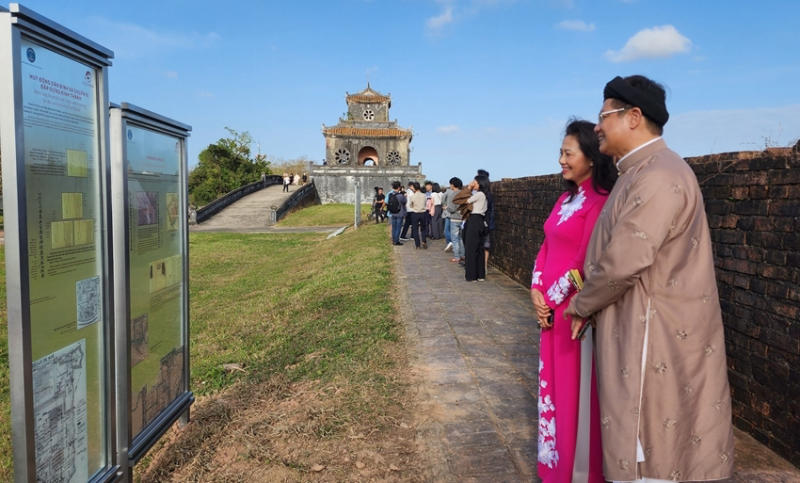
Immerse in Vibrant Festivals
Hue Imperial City hosts captivating festivals during the Lunar New Year (typically from late January to mid-February) and special ceremonies, providing Indian tourists with a wonderful opportunity to experience traditional festivities in this ancient feudal city.
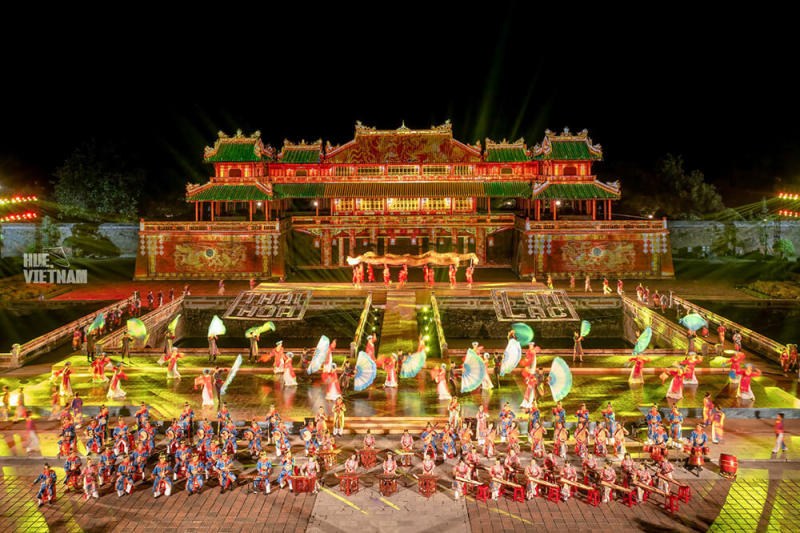
The Hue Festival, the biggest event in Hue City, is held every two years. Held partly within the Hue Imperial City, this festival features traditional royal performances, including dances and singing, as well as traditional games.
Try Local Dishes
Surrounding Hue Imperial City, a variety of eateries offer local dishes for Indian tourists to savor during their exciting outdoor trips. Don’t miss out on specialties such as Hue beef noodle soup (Bún Bò Huế), water fern cake (Bánh bèo), rice dumpling cake (Bánh bột lọc), and Hue sweet soup (Chè Huế).
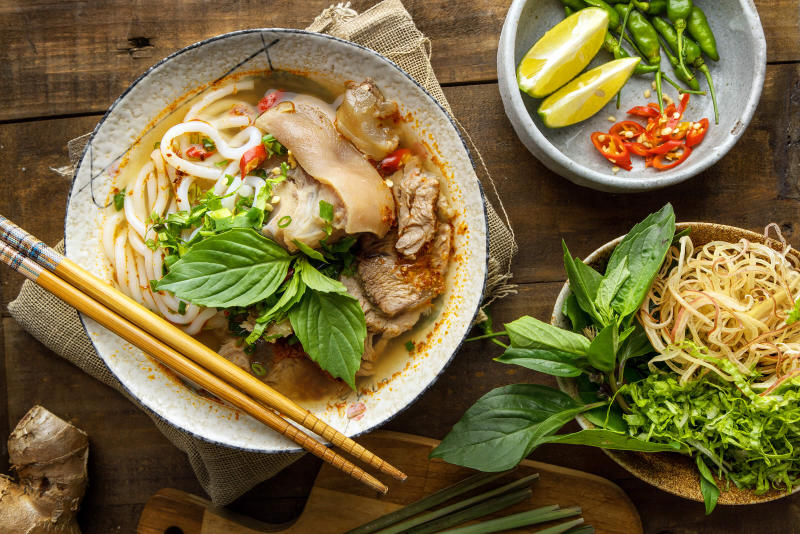
Attractions Nearby Hue Imperial City
- Perfume River: A picturesque river flowing through Hue, Vietnam, renowned for its scenic beauty and cultural significance. Visitors can enjoy boat cruises along the river, offering stunning views of Hue’s historic landmarks and lush landscapes.
- Tu Duc Tomb: One of the most beautifully designed royal tombs in Hue, built for Emperor Tu Duc during the Nguyen Dynasty. The tomb complex features elegant architecture, tranquil gardens, and ornate pavilions, reflecting the emperor’s poetic and artistic sensibilities.
- Khai Dinh Tomb: A majestic imperial tomb located in Hue, constructed for Emperor Khai Dinh, the 12th ruler of the Nguyen Dynasty. Known for its blend of Western and Eastern architectural styles, the tomb’s grandeur and intricate details make it a captivating attraction for visitors.
- Thien Mu Pagoda: An iconic Buddhist temple situated on the banks of the Perfume River in Hue. With its striking seven-story octagonal tower, Thien Mu Pagoda is not only a religious site but also a symbol of Hue’s spiritual and cultural heritage.
Tips When Visiting Hue Imperial City
- Dress modestly and respectfully.
- Follow instructional signs.
- Maintain quiet and respectful behavior indoors.
- Respect artifacts.
- Keep the area clean and hygienic.
- Wear comfortable shoes for walking.
- Protect yourself from the sun with a hat, sunscreen, and sunglasses.
- Bring a water bottle and snacks to maintain your energy levels.
- Go with a local guide for an efficient trip and a deeper understanding of Vietnam’s history and culture.
Conclusion
When you visit Hue Imperial City, you will experience a fascinating blend of Eastern and Western architecture and learn about the royal life in Vietnamese feudal society. It is definitely one of the top attractions in Hue, so don’t miss out! Plan your Hue Imperial city tour with our customized Vietnam tour packages now. We are here to support you every step of your travels in Vietnam.
OTHER ATTRACTIONS IN HUE
ITINERARIES WITH THIEN MU PAGODA

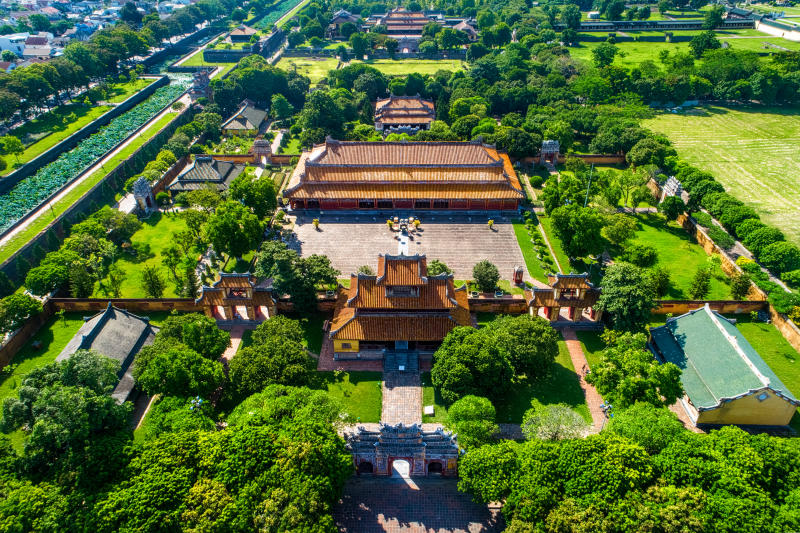
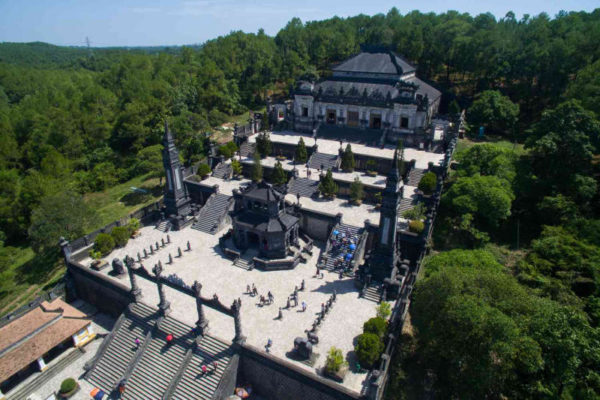
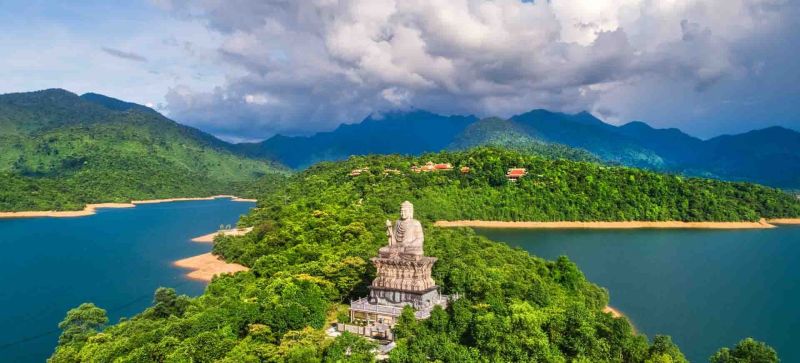
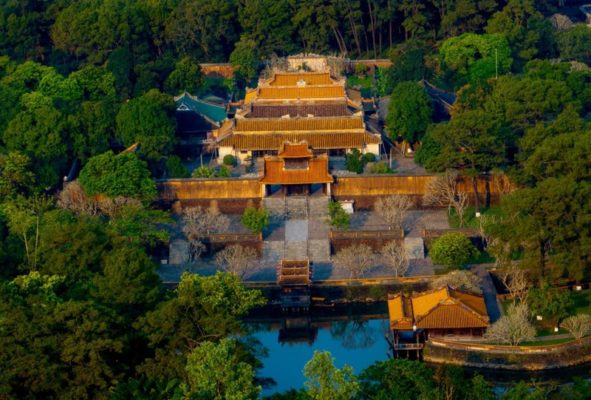
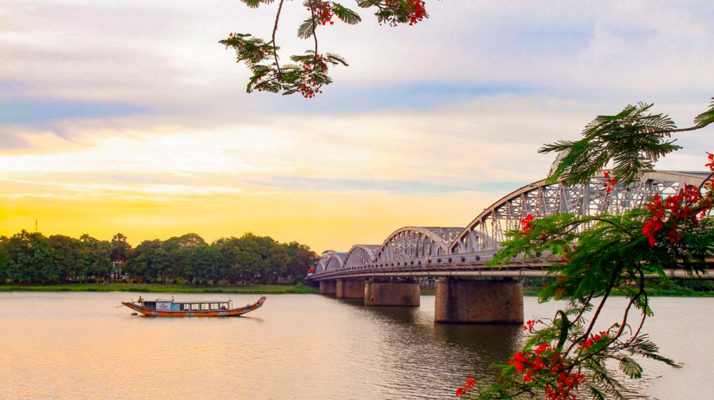
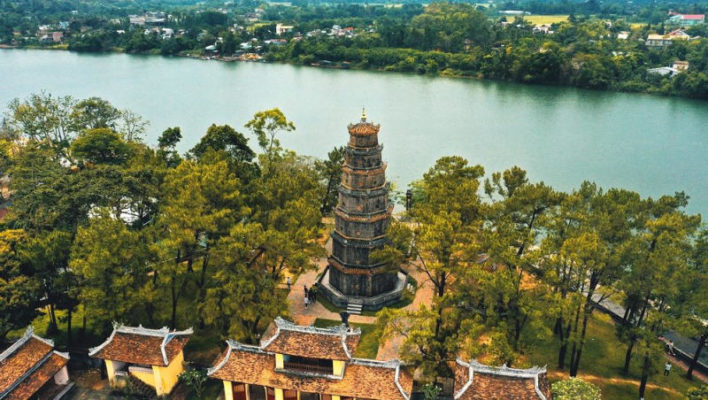
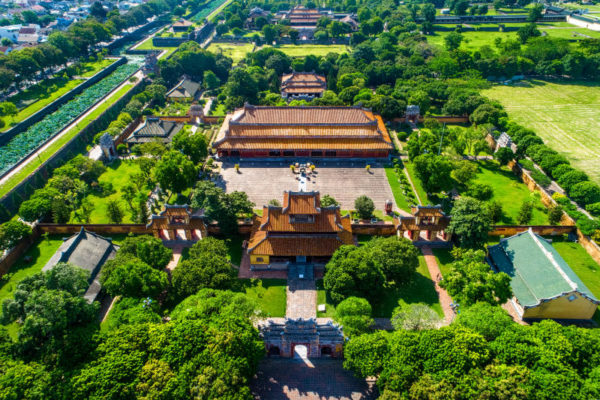
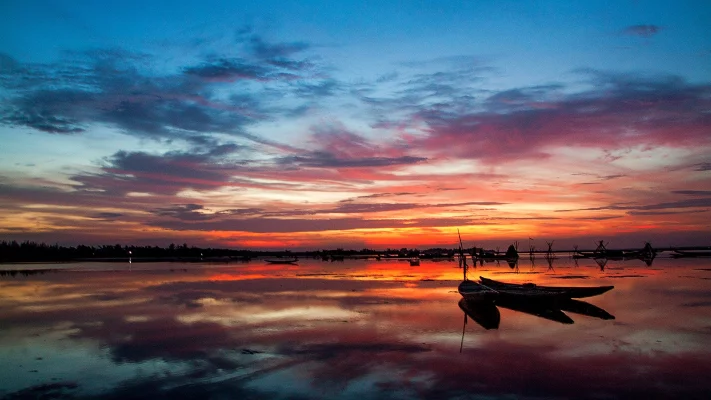
1 Countries 6 Cities
Vietnam Highlights Discovery
Departure City: Mumbai
Latest Departure Date: December 06 2025
15 seats left
Starting fromSave 35% ₹1,12,000
per person on twin sharing with airfares